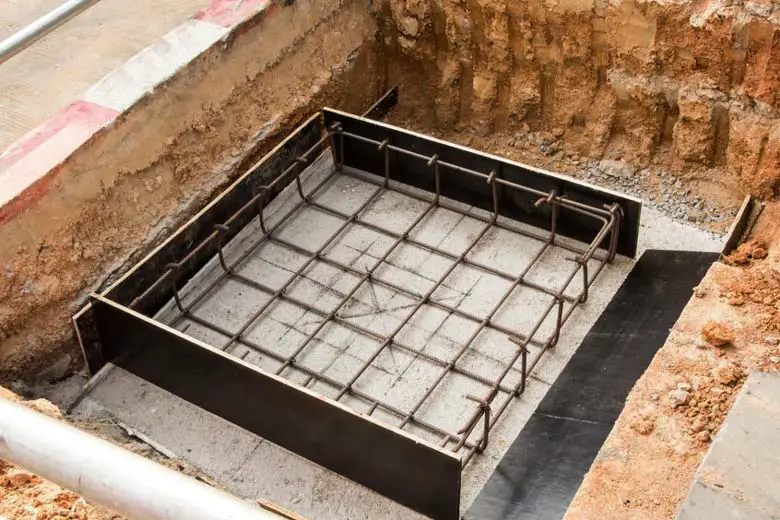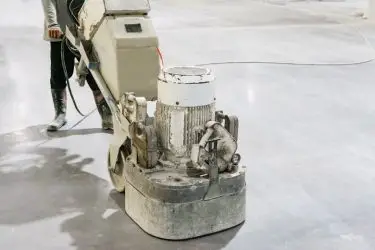Footings are the lowest part of the foundation that is made of concrete, built below the ground and is used to support the foundation. It also prevents the building from settling over time. Choosing the right kind of concrete for footings is crucial for the overall integrity of the building that’s being constructed.
The best concrete mix to use for footings is one that has a professional-grade blend of Portland Cement and that has a compressive strength of at least 4,000 and 5,000psi. It should be crack and shrinkage-resistant, have aggregates that are not too large or coarse, and a slump between 2 to 5 inches.
Like most concrete projects, laying footings requires the concrete mix to be just right or a lot of things can go wrong. Because footings are a part of the foundation, they need precision and correct handling more than most. Below are a few things to take into consideration while choosing the best concrete mix for your footings.

Table of Contents
Footings And Foundations
Most construction projects begin with excavating the soil, regardless of the size of the structure being built.
However, the real building and construction begin with laying concrete for the footings before the foundation is ever laid.
There is a definite difference between the footing and the foundation.
Footings are the lowest part of the foundation that transfers the weight of whatever structure is being built to the soil.
They are generally reinforced with rebar, or reinforced steel bars since large construction projects, such as houses, need more tensile strength in the concrete.
For houses, footings tend to be between 16-inches to 24-inches wide and 8-inches to 12-inches thick.

All the footings should be level for normal types of construction projects, or the structure will not be level.
After the footing cures for 24 hours, the contractor will then pour concrete for the foundation on top of the footing.
Most contractors will (and should) pour both the footing and the foundation.
Both the foundation and the footing play crucial parts in the construction of a structure like a house or an office building. They basically hold everything up on top of themselves.
Investing in the footing and foundation of a building will yield dividends in the lifespan of the structure.
Compressive Strength
Knowing and understanding what the concrete mix’s compressive strength is will save time and money in the long and short run of any given concrete project.
All concrete mixes will come with documentation and instructions that have that mix’s potential compressive strength. They will come in either psi (pounds per square inch), MPa (megapascals), or both.
Most experts recommend that for footings, the psi be at least 4,000 to 5,000 (or 27.5 to 34.5 MPa).
This depends on the type of structure that’s being constructed. The larger and heavier the structure will be, the higher the psi will be needed to support the structure.
Deciding which concrete to use should be done in the preparation phases of the project.
Aggregates
Choosing the correct grade of aggregates for the concrete mix is another important aspect to think about before choosing the concrete mix.
Aggregates can make up, at the most, 80% or 85% of the volume and mass of the concrete mix you choose.
They also add to the overall compressive strength and keep the integrity of the cement intact.

Aggregates are “inert, granular materials such as sand, gravel, or crushed stone that, along with water and Portland Cement, are an essential ingredient in concrete.” Source
Below is a list of ways good aggregate affects your cement:
- Durability and lifespan
- Compressive strength
- Volume and dimensional stability
- Shrinkage
- Workability
- Whether the cement can receive finishes afterward
- Thermal and elasticity properties
Footings often have rebar to strengthen and reinforce the concrete it’s made of.
Using aggregates that are too coarse or large will cause a problem called “honeycombing,” which is a term used to describe crude or rocky surfaces. In concrete, this is caused by using the incorrect grade of aggregate in the mixture or poor mixing.

You can correct honeycombing by adding more cement and fine aggregates like sand into the mix and by mixing properly until the concrete mix is evenly distributed with water.
Slump
A concrete’s “slump” is a measure of its consistency after it has been mixed with water, as it’s being placed in the form, and before it sets.
Professionals and contractors, after pouring the concrete, will perform what is called a “concrete slump test” in order to check how workable the fresh concrete is. This test can also show you if the concrete was mixed improperly.
There are different standards for slump tests depending on where you live. The United States uses ASTM and AASHTO standards.
However, most professionals can recommend that for footings, the slump should be between 2 and 5 inches. The slump that is higher than 3.9 inches (100 mm) is considered “high workability” concrete. It’s used where concrete must flow large a distance and where reinforcement has tight spacing.



